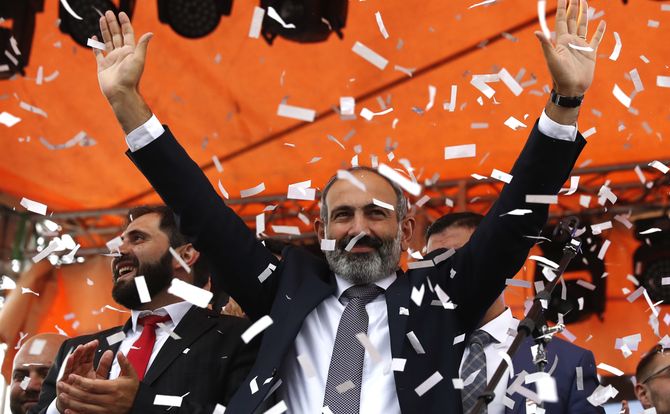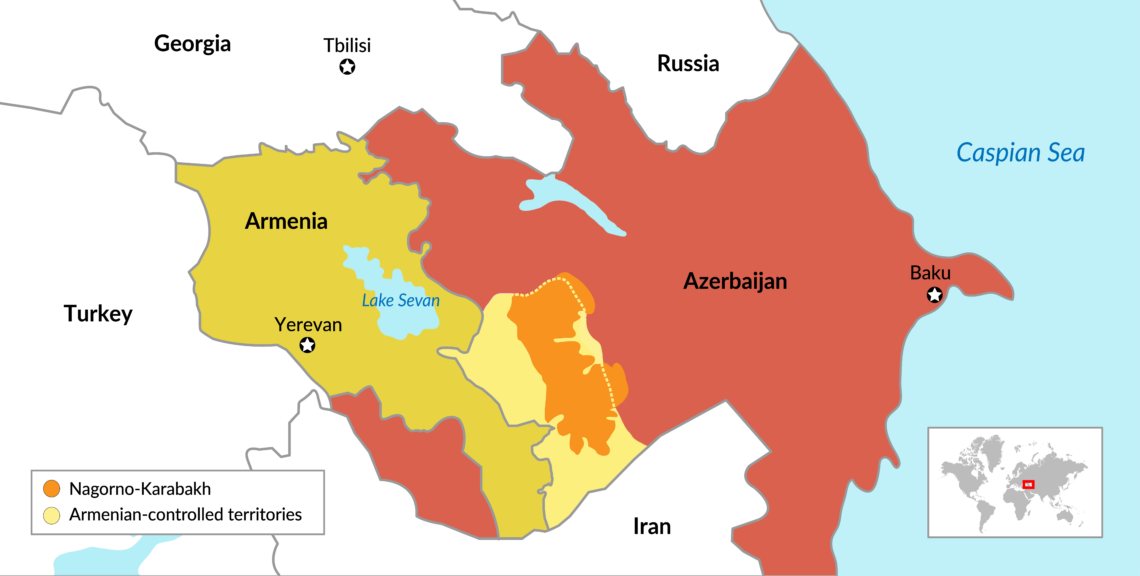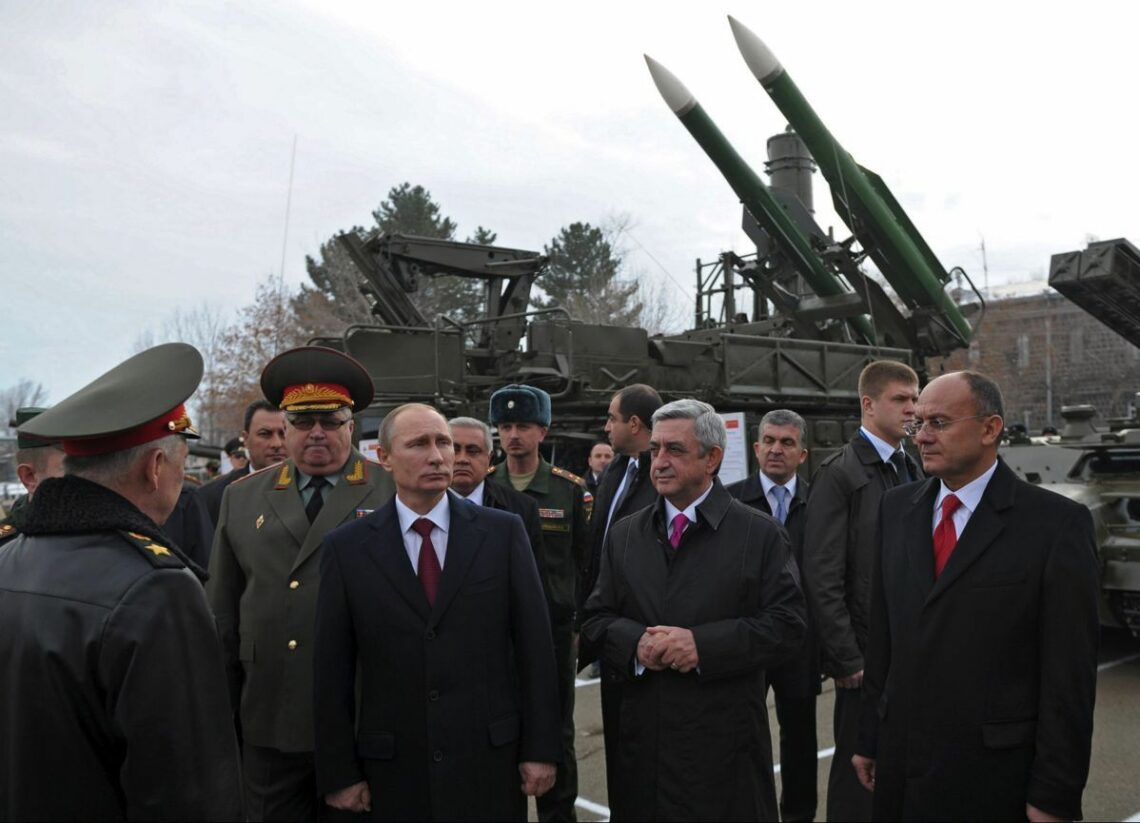Armenia’s velvet revolution poses long-term risks
On the surface, the overthrow of the longtime ruler of Armenia, Sargsyan, poses no threat to Russia. Opposition leader Pashinyan, elevated to the premiership by popular revolt, keeps supporting close ties with Russia. But in the long run, reforms that tackle corruption among the political and business elites work against Moscow’s interests.

In a nutshell
- Armenia is the strategic linchpin of Russia’s position in the South Caucasus
- The Kremlin seems oddly unruffled by the latest “color revolution” in Yerevan
- While the new government is staunchly pro-Russia, reforms will create tensions
Following a long period of political stability and close relations with Russia, in mid-April Armenia was suddenly thrown into political turmoil. Tens of thousands of people took to the streets. Traffic in Yerevan was paralyzed. The metro was closed, and government offices were blockaded. As it became obvious that the army would refuse to be deployed, the government was forced to resign and a new prime minister was elected. In short, it had all the trimmings of a peaceful “color revolution.”
From a Russian perspective, this was a potentially alarming development. The Kremlin has over the past decade cultivated fears of foreign-backed regime change in its neighborhood that border on paranoia. It has proven its readiness to go to war, first in Georgia and then in Ukraine, to counter “color revolutions” in those countries. And the danger of further such instances features prominently in its security doctrine.
Strangely aloof
If Armenia should opt for closer relations to Europe, and for membership in Western organizations like NATO and the European Union, it would imply a dramatic geopolitical reconfiguration of the South Caucasus.
At stake is not only the role and influence of Europe, in a key part of what Russia regards as its own backyard. The Kremlin also has cause to be concerned about the long-frozen conflict between Armenia and Azerbaijan over the Nagorno-Karabakh enclave, and possibly even about Turkey opting to intervene, should President Recep Tayyip Erdogan feel a need to deflect attention from other matters by playing the Armenia card.
Given how much hangs in the balance, one might have expected that the Kremlin would have intervened in some way once Armenia’s government began to crumble, at the very least to make its views and presence known. To date, however, its stance has been remarkably aloof. Perhaps it was because the whole upheaval seemed to come out of nowhere. Even seasoned observers admit they did not see it approaching.
It seems rather odd that the Kremlin would take another color revolution in its stride.
With many other pressing problems to deal with, President Vladimir Putin may have been unprepared to take preventive action. But this does not explain his strangely casual attitude to the aftermath. In a situation where Western observers are constantly on alert for possible Russian retaliation for harsher sanctions, it seems rather odd that the Kremlin would take another “color revolution” in its stride.
The tempting conclusion is that the Armenian events are much ado about nothing, vindicating Russia’s tepid response. This may even be true in the short term, but farther out, there are good reasons for caution. The geopolitical implications of Russia losing its stronghold in Armenia are so menacing that it could well be ready to use force in response to a true challenge. But has this happened?
Roots of revolt
The spark that triggered the upheaval came on April 13, when outgoing President Serzh Sargsyan was nominated to the post of prime minister. The nomination was put forward in a National Assembly dominated by his own Republican Party. It followed only days after his term as president had expired and was viewed by the opposition as an unconstitutional power grab.
In the world of postcommunist power politics, there was nothing unusual about the move. Barred by the constitution from serving a third term, Mr. Sargsyan simply sought to remain in power. For good measure, he had prepared the ground via a constitutional amendment, adopted in 2015, that transformed Armenia from a presidential into a parliamentary republic, giving more power to the prime minister. Despite some impromptu street protests, on April 17 he was duly appointed. Believing the deal was done, Russian President Vladimir Putin offered his “warm” congratulations.
But the Armenian population would have none of it. Following several days of mass protests, on April 23 Mr. Sargsyan chose to step down voluntarily, admitting he had been wrong. Then followed two weeks of uncertainty, as the National Assembly tried to agree on a successor.
Facts & figures
Armenia - flashpoint in the South Caucasus

The opposition candidate, Nikol Pashinyan, was a former journalist and editor who had campaigned against corruption and even served time in prison. His campaign was at first thwarted by the parliamentary majority of Mr. Sargsyan’s Republican Party. In a first ballot on May 1, he was defeated by 56 votes to 45.
The opposition’s response was to urge people back into the streets, and to call a general strike. When soldiers began joining the protesters, the game was up. On the National Assembly’s second ballot, on May 8, Mr. Pashinyan was elected and could proceed to form a new government. Despite this drastic turn of events, Russia appeared unperturbed.
Russian stronghold
With a population of just under 3 million, Armenia has emerged over the past decade as one of the few genuine friends, if not the only one, that Russia can count on in its foreign policy. During his two terms as president, from 2008 until 2018, Serzh Sargsyan pursued a careful policy of not allowing closer relations with Europe to jeopardize the strategic partnership with Russia.
When the EU invited Armenia to join its Eastern Partnership (EaP), together with Georgia, Ukraine and Moldova, President Sargsyan preferred to abstain. Well before the December 2013 EU summit meeting in Vilnius, where the EaP was to be signed, he announced he would not even attend. Armenia instead became a member of Mr. Putin’s Eurasian Economic Union, founded in 2015. Given that Armenia is also a founding member of the Russia-led Collective Security Treaty Organization, its foreign policy orientation has been made clear.
The main question is whether the recent changes in Armenia herald a major geopolitical reorientation.
Ensuring that Armenia did not follow the example of Georgia and Ukraine in pursuing a pro-Europe policy may be viewed as the Kremlin’s crowning policy achievement in the South Caucasus.
While Russia’s armed forces have been forced to leave most of the other former Soviet republics, they still maintain a large garrison in Armenia. A major base at Gyumri houses some 3,000 mechanized troops with tanks, armored personnel carriers and artillery. They are protected by several batteries of S-300 air defense systems, and Russian MiG-29s deployed at Gyumri have played an important role in securing the Armenian airspace.
Regional impact
Looking forward, the main question is whether the recent changes in Armenian politics also herald a major geopolitical reorientation in the South Caucasus. An important reason why the Kremlin may feel it has little to fear derives from its role as Armenia’s protector against hostile neighbors.
Armenian-Turkish relations are marked by deeply rooted hostility, emanating from the Armenian genocide of 1915, while relations to Azerbaijan have been poisoned by Armenia’s military conquest, in the early 1990s, of the Nagorno-Karabakh enclave. Azerbaijan and Turkey, moreover, are on very good terms. This provides an excellent context for the Kremlin to play its favored game of power broker and regional hegemon.
In the conflict over Nagorno-Karabakh, Russia straddled the fence, supplying both sides with weapons. Moscow has a strong stake in keeping the conflict frozen. While booming petrodollar incomes have translated into a substantial military buildup in Azerbaijan, Russia is clearly not going to allow Azeri forces to recapture the enclave.

If there were any doubts on that score, they were dispelled by the Russian base commander at Gyumri, Colonel Andrey Ruzinsky, who stated in 2013: “If Azerbaijan decides to restore jurisdiction over Nagorno-Karabakh by force, the [Russian military] may join in the armed conflict in accordance with the Russian Federation’s obligations under the Collective Security Treaty Organization.”
It was also symptomatic that when Azerbaijan staged an offensive into the northern part of Nagorno-Karabakh in April 2016, Russia stepped in to broker a cease-fire within four days.
These facts help us assess whether Armenia’s new government can stick to its pledge of following a strictly domestic agenda that will not alter the country’s geopolitical orientation.
Domestic agenda
The Armenian opposition’s deliberate use of the term “velvet revolution” brings back memories of the 1989 original, which saw a peaceful collapse of communist rule in Czechoslovakia, followed by a smooth transition to a liberal market economy.
Can Armenia tread the Czech and Slovak path to political stability and prosperity? Viewed from the Kremlin, the comparison is ominous – since the Czechs and Slovaks were also rewarded with NATO and EU membership.
The street protests that lifted Mr. Pashinyan to power were mostly free of anti-Russian slogans.
The key barometer is relations with Russia. It was important that the groundswell of protest that lifted Mr. Pashinyan to power was mostly free of the anti-Russian and pro-European slogans that featured so prominently in political mobilization elsewhere. During a meeting with President Putin in Sochi, on May 14, Prime Minister Pashinyan carefully emphasized that he favored closer political and military ties with Russia.
The evidence to date also suggests that the new government in Yerevan is sincere in claiming that its agenda is exclusively domestic. The authorities are focused on strengthening democracy and the rule of law, along with a serious campaign against corruption. By curbing the influence of kleptocratic elites, it hopes to deliver economic rewards and opportunities for young people who mobilized to bring about change.
Reform dilemma
At first glance, none of this threatens Russia in any way. But closer consideration gives cause for concern. The main risk to a positive scenario in Armenia is that staying on good terms with Russia may conflict with the domestic agenda of improved governance.
The driving force in Mr. Sargsyan’s downfall was young people’s rising frustration with corruption and nepotism among political elites with Russian connections. This also explains Mr. Pashinyan’s success, which stemmed from an anticorruption agenda that tapped into popular sentiment. All this is encouraging in the short term, but presents two serious hurdles in the long run.
The first is that horizontal activism and networking will have to be redirected vertically into interest aggregation. In short, young people will have to leave the streets and move into the corridors of politics. The lesson from countries like Ukraine is that this may be a tall order. Following three revolutions, each driven by massive horizontal activism, that country remains divided by a vertical firewall – on the lower level, a layer of vibrant civil society, and on the upper level, predatory elites that refuse to accept any form of accountability.
The path of reform in Armenia will inevitably lead to pressure from below for a pro-European choice.
It is likely that Armenia could face a similar dynamic, as activism fizzles and power remains in the hands of an entrenched oligarchy. That can only bring economic stagnation, which could produce a renewed outburst of activism or cynicism and hapless acceptance. This is the same dilemma that remains unresolved in Ukraine.
Even a scenario of successful institutional change has a serious downside. As prosperity grows and democracy takes hold, increasing numbers of Armenians will ask whether turning to Europe might be preferable to sticking with a sinking Russian ship. Although anti-Russian sentiment has not yet appeared in public debate, that does not mean it is not simmering beneath the surface.
The path of reform in Armenia will inevitably lead to pressure from below for a pro-European choice, channeling growing anger over venal links between Russian and Armenian elites. This is the basic Armenia dilemma that bears watching. Signs of successful domestic reforms may prompt the Kremlin to intervene. Even if such intervention initially fell short of military force, it would inevitably feed latent anti-Russian sentiment. The result could be a true challenge to Russia’s influence, despite its traditional role as Armenia’s protector.







